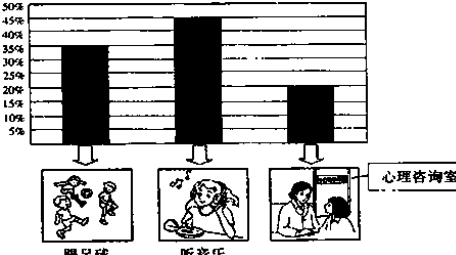题目内容
17.Once,a professor kept a chair at a certain distance on the stage in front of the audience.He started his lecture,then pointing to the middle row,those who were sitting exactly in front of the chair.He asked,"How many legs can you see the chair has?But answer me exactly what you observe,not supposing(认为) that the chair has four legs?"The first person of the middle row replied,"Two,because the other two legs were hidden behind the front legs."The professor then asked the same question to the left side viewers.The answer came,"Three.Here,one back leg was hidden behind one of its front side legs.So,only three were visible."The same question was repeated to the right side and the extreme corner side audience.The answers he received were"Three"and"Four"respectively(各自).
The professor then said,"Look!All of you know that the chair has four legs,but when I asked you to answer me exactly what you are observing from your angle,your answer varied.But do you think it is possible?So what does it mean?We suppose it as the differ ent numbers according to our perception (观察力),the angle from which we view.So,what I mean to say is that our perception is not always absolutely correct or true.The same thing happens to everybody,when he/she judges others from his/her viewpoints.Kindly,take your time,but judge others correctly.
21.At the beginning of his lecture,the professor asked the audience toB.
A.imagine the chair has four legs
B.tell how many legs of the chair they can see
C.judge the numbers of the chairs directly
D.suppose how many legs the chair has
22.Who could see two legs of the chair in the research?A
A.The audience in the middle row
B.The audience on the left side.
C.The audience on the right side.
D.The audience on the extreme corner side.
23.The audience observed the chair fromA.
A.their angle of perception B.others'feeling
C.their hearing D.others'viewpoints
24.Which of the following can best describe the professor?C
A.Careless.B.Bad-tempered.C.Intelligent.D.Selfish.
分析 教授在讲台上放了一把椅子,他让观众根据白己的实际观察而不是根据自己的经验来回答,处于不同位置的观众给出了不同的答案,由此告诉人们一个道理:看待问题的时候不要根据自己的直觉,有时候直觉也会造成错误.
解答 21.B细节题.根据第一段He asked,"How many legs can you see the chair has?这句话,告诉我们一开始教授给观众提了一个问题,即"你能看到椅子有多少条腿",故答案为B.
22.A 细节题.根据第二段The first person of the middle row replied,"Two,because the other two legs were hidden behind the front legs可知,坐在中间位置的观众回答椅子有两条腿,故答案为A.
23.A判断推理题.在文章第二段不同的观众给 了不同的答案,The first person of the middle row replied,中间位置的观众; the left side viewers坐在左边的观众;the right side and the extreme corner side audience坐在右边以及拐角处的观众,所以得出坐在不同位置的人给出了不一样的答案,故答案为A.
24.C 细节题.根据文章最后一句The same thing happens to everybody,when he/she judges others from his/her viewpoints.Kindly,take your time,but judge others correctly可知,教授通过一个实验让人明白了一个道理,看问题角度不同得到的结论也不一样,所以教授应该是一个很睿智的人,故答案为C.
点评 阅读人物传记,需要从文中整体了解人物,其次细看文章中关于人物经历或观点的细节内容

